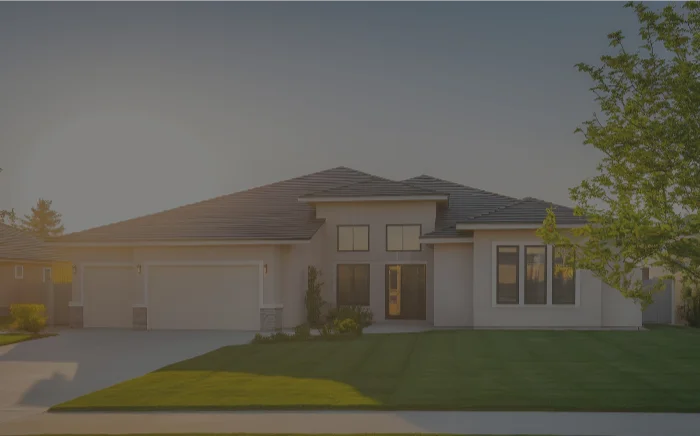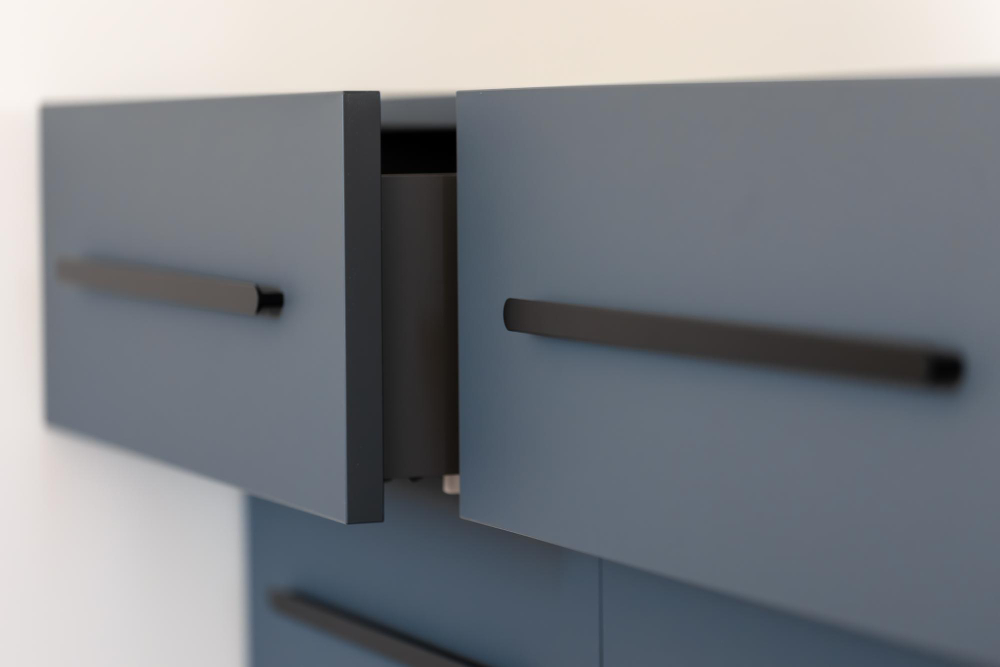

Kitchen and bathroom cabinets endure daily wear and tear that would challenge even the most durable surfaces. From cooking grease and steam to frequent handling and cleaning, your cabinets face a constant barrage of moisture, heat, and physical contact. Choosing the right paint type and finish isn't just about aesthetics—it's about protecting your investment and ensuring your cabinets look fresh for years to come.
The paint you select can make the difference between a cabinet makeover that lasts a decade and one that starts showing wear within months. Professional cabinet painters understand that different spaces, usage patterns, and cabinet materials require specific paint formulations to deliver optimal results.
This guide explores the most effective paint types and finishes for cabinet projects, helping you make informed decisions whether you're planning a DIY refresh or working with professional contractors.
Oil-based paints have long been the gold standard for cabinet painting, and for good reason. These paints cure to an exceptionally hard, durable finish that resists scratches, dents, and daily wear better than most alternatives.
The molecular structure of oil-based paints allows them to penetrate deeper into wood surfaces, creating a strong bond that stands up to frequent use. They also self-level beautifully, minimizing brush marks and creating that smooth, professional appearance homeowners desire.
However, oil-based paints come with trade-offs. They emit strong fumes during application and curing, require excellent ventilation, and take significantly longer to dry between coats. Cleanup requires mineral spirits rather than water, and disposal must follow local environmental regulations.
Today's high-quality water-based paints have revolutionized cabinet painting. Advanced acrylic formulations now offer durability that rivals traditional oil-based options while addressing many of their drawbacks.
Water-based paints dry faster, produce minimal odor, and clean up easily with soap and water. They maintain their color better over time, resisting the yellowing that can affect oil-based finishes, particularly in spaces with limited natural light.
The key lies in selecting premium water-based paints specifically formulated for cabinets and trim. These specialized products contain higher concentrations of acrylic resins and hardening agents that create tough, washable surfaces.
Hybrid paints combine water-based convenience with oil-based performance characteristics. These innovative formulations use modified alkyd resins that cure harder than standard water-based paints while maintaining low odor and easy cleanup.
Many professional painters now prefer hybrid paints for cabinet projects because they offer extended working time for smooth application, excellent adhesion, and superior durability without the environmental concerns of traditional oil-based products.
Semi-gloss finishes strike an ideal balance between durability and appearance for most cabinet applications. The moderate sheen reflects enough light to highlight the paint's smoothness while remaining subtle enough not to emphasize minor surface imperfections.
This finish level provides excellent washability, making it perfect for kitchen cabinets that encounter cooking residue and frequent cleaning. The smooth surface resists moisture penetration and wipes clean easily with standard household cleaners.
Semi-gloss works particularly well on flat-panel cabinet doors where the uniform surface showcases the finish's subtle luster without creating unwanted glare or reflections.
Satin finishes offer slightly less sheen than semi-gloss while maintaining good durability and cleanability. This finish choice works beautifully in bathrooms and powder rooms where you want a refined appearance without high reflectivity.
The lower sheen level of satin finishes helps camouflage minor surface irregularities and touch-up work, making them forgiving choices for older cabinets or DIY projects. They still provide adequate moisture resistance for most applications while creating a sophisticated, contemporary look.
Satin finishes complement both traditional and modern kitchen designs, offering versatility that appeals to many homeowners updating their spaces.
High-gloss finishes provide the ultimate in durability and cleanability, creating surfaces that withstand heavy use and frequent washing. The hard, smooth surface resists stains, scratches, and moisture damage better than any other finish level.
These finishes work exceptionally well in contemporary kitchens where the sleek, reflective surface complements modern appliances and clean design lines. The high sheen amplifies light, making spaces appear larger and brighter.
However, high-gloss finishes require meticulous surface preparation and application technique. They highlight every imperfection, brush mark, and surface irregularity, making professional application often necessary for optimal results.
Proper surface preparation determines paint adhesion and longevity more than any other factor. Begin by removing all cabinet doors, drawers, and hardware, then thoroughly clean all surfaces with a degreasing agent to remove cooking residue, fingerprints, and accumulated grime.
Sand all surfaces lightly with 220-grit sandpaper to create tooth for paint adhesion. Focus on areas with existing finish damage, but avoid aggressive sanding that might damage veneer or create unnecessary repair work.
Fill any holes, scratches, or imperfections with high-quality wood filler, then sand smooth once fully cured. Take time to ensure all surfaces are uniformly smooth before proceeding to primer application.
High-quality primer creates the foundation for long-lasting paint performance. Choose primers specifically designed for your cabinet material—whether solid wood, laminate, or previously painted surfaces.
For bare wood cabinets, use a high-build primer that seals the wood grain and creates a uniform surface for paint application. Laminate cabinets require specialized bonding primers that chemically adhere to smooth, non-porous surfaces.
Apply primer in thin, even coats using high-quality brushes or spray equipment. Allow full curing time between primer and paint application—rushing this step compromises the entire project's durability.
Professional cabinet painters often prefer spray application for its smooth, uniform finish quality. Spraying eliminates brush marks, reduces application time, and allows better coverage of detailed areas like raised panels and molding profiles.
However, spraying requires specialized equipment, extensive masking, and proper ventilation. Many homeowners find brush and roller application more practical for their projects.
When brushing, use high-quality synthetic brushes designed for your paint type. Work in manageable sections, maintaining wet edges to avoid lap marks. Sand lightly between coats with fine-grit sandpaper for optimal smoothness.
Paint cure time differs significantly from dry time. While surfaces may feel dry to touch within hours, full cure—when paint reaches maximum hardness and chemical resistance—can take days or even weeks depending on temperature, humidity, and paint formulation.
Avoid replacing cabinet doors and hardware until paint has fully cured. Premature handling can cause impressions, scratches, or adhesion between painted surfaces that damage the finish.
Plan your project timeline to account for proper curing, especially for kitchen cabinets that receive heavy daily use.
Proper maintenance extends the life of painted cabinets significantly. Clean regularly with mild soap and water, avoiding abrasive cleaners or scrubbing pads that might damage the finish.
Address spills and stains promptly before they penetrate the paint film. Use soft microfiber cloths for routine cleaning, and dry surfaces thoroughly to prevent water spots or mineral deposits.
Inspect cabinet areas around sinks and dishwashers regularly for signs of moisture damage, addressing any issues immediately to prevent more extensive problems.
Complex cabinet painting projects benefit from professional expertise, particularly when dealing with intricate details, multiple paint types, or time constraints.
If you're looking for cabinet painters in Apopka, FL, contact Rusty's Painting today to request an estimate. Professional painters bring specialized equipment, proven techniques, and warranty protection that ensure optimal results for your investment.
Selecting the right paint type and finish for your cabinets sets the foundation for a successful, long-lasting transformation. Whether you choose the traditional durability of oil-based paints, the convenience of modern water-based formulations, or the balanced performance of hybrid options, proper preparation and application techniques ensure professional-quality results.
Remember that cabinet painting represents a significant investment in your home's value and your daily living experience. Take time to choose quality materials, follow proper procedures, and don't hesitate to consult with professionals when your project demands expertise beyond your comfort level.